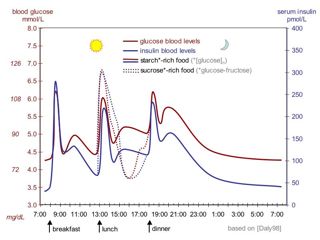"Diabetes is inconvenient when you are out due to the fact that you have to give yourself shots in a restaurant," says Robert Parker. "It can kill you. It is a serious illness."
Parker has had diabetes for 15 years. He is 63 years old and has type 2 diabetes. When Parker first was diagnosed with diabetes, he started to use an insulin shot and would have to prick himself and take blood. Later on, his doctor switched him over to taking pills to help control the sugar level because that’s what worked well with his body.
Diabetes is the seventh leading cause of death and 4 million people a year die worldwide, according to the World Health Organization. There are around 346 million people with diabetes around the world. The World Health Organization states that causes of death relating to diabetes will double by 2030.
According to American Diabetes Association, there are three types of diabetes: type 1, type 2, and gestational diabetes. Diabetes can be caused by too little insulin. Type 1 can be diagnosed at any age, but is most common in children, teens and young adults. In type1 diabetes, the body does not make enough insulin or none at all. The treatments for this are injections of insulin. Type 2 diabetes is the most common, which is mostly diagnosed in adulthood, but more and more teens and young adults are being diagnosed with due to high rates of obesity. Lastly, gestational diabetes is when a pregnant woman, who does not have diabetes, has high blood sugar.
Insulin allows the blood glucose to be transported from the blood into the cells. Cells have an outer wall, called a membrane, which controls what enters and exits the cell. Insulin joins with receptors on the cell's membrane. This activates molecules so that the glucose and proteins enter the cell. The cells use the glucose as energy to carry out their functions. Once it is transported into the cell, the blood glucose level returns to normal. 
Symptoms of diabetes that are fatigue, infections, blurred eyesight, numbness, tingling in the hands or legs, thirst more often, and slow healing of bruises or cuts, according to the American Diabetes Association.
Consequences of not treating diabetes can vary. According to the National Diabetes Information Clearinghouse, heart disease, strokes, blindness, and kidney are all consequences to people who do not treat their diabetes correctly. Diabetes can cause you to pass out with incorrect levels of insulin.
Another method of controlling sugar level is taking pills. There are a number of choices of medication brands and doses. Diabetes has affected Parker’s life because he really likes sweets and he cannot eat those all the time. Robert says that he treats his diabetes by taking a pill and eating as healthy as possible.
There are four different types of ways insulin can work. According to the American Diabetes Association, “rapid-acting insulin reaches the body within 15 minutes, highest times at 30–90 minutes, and can last five hours.” Slow-acting insulin reaches the blood within 30 minutes. Intermediate-acting insulin reaches the blood two to six hours after the person injects. On the other hand, long-acting insulin takes 6 to 14 hours to start working., “Diabetics each have different responses to and needs for insulin so there is no one type that works for everyone, says the American Diabetes Association.
| Related stories: Living with a Diabetic Dad, Immigration and Living with Type 2 Diabetes |
Parker used to have to prick himself to determine whether he needed insulin, but now goes to the doctor so he could control the amount of insulin he takes in. His doctor prescribes pills for more control.
When testing you for your sugar level, it can hurt,” says Parker. Kelsey Duemler

This work is licensed under a Creative Commons Attribution-NonCommercial-NoDerivs 3.0 Unported License
















i thought this article was veary good,i never realy understood diebetes but after reading this article i get it a lot more
i learn a little more about diebetes.it going to help me with mine. knowing what i know now. :smile
This article was very good, however I wished that u would have went into details about how u can get diabetes. BUT IT WAS VERY GOOD!!
This article was really good if you want to know more about diabetes, and since my brother recently was warned he might have diabetes ive been wanting to learn how he gets it. Its also helpfull to know what it can do to him if its not controlled. So this article was really good and helpfull and helped me understand diabetes.
I thought that this article is very intresting and that it is very helpful to the people who wants to know more about diabetes. I found that diabetes is the seventh leading cause of death and 4 million people a year die worldwide. Also that the cause of death relating to diabetes will double by 2030,meaning that the economy is getting worser.
i think this article is really good,I never really knew how diabetes worked until now
Great article. Are there certain nationalities that get diabetes more than others?
as a type 1 diabetic i have found that this artical is very helpful to people who want to learn about diabetes but the third type of diabetes i would have to look more into it before i go beliving that it exists.
:zzz:zzz:zzz:zzz:zzz:zzz:zzz:good
I’m Type 1 Diabetic and life can be hard, but insulin makes life easier.:yes